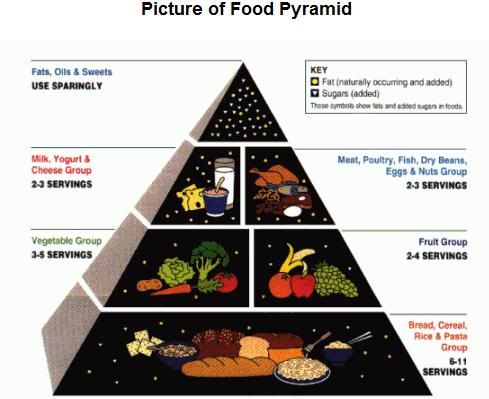Vegetarian types:
1) Pescatarian
(also spelled pescetarian). The word “pescatarian” is occasionally used
to describe those who abstain from eating all meat and animal flesh with the exception
of fish. Although the word is not commonly used, more and more people are
adopting this kind of diet, usually for health reasons or as a
stepping stone to a fully vegetarian diet.
2) Flexitarian/Semi-vegetarian . “Flexitarian” is a
term recently coined to describe those who eat a mostly vegetarian diet, but
occasionally eat meat.
3) Vegetarian
(Lacto-ovo- vegetarian)
When most people think of vegetarians, they think of lacto-ovo-vegetarians.
People who do not eat beef, pork, poultry, fish, shellfish or animal flesh
of any kind, but do eat eggs and dairy products are lacto-ovo vegetarians
(“lacto” comes from the Latin for milk, and “ovo” for egg).
Lacto-vegetarian is used to
describe a vegetarian who does not eat eggs, but does eat dairy products.
Ovo-vegetarian refers to people who do not eat meat or dairy products but do
eat eggs.
4)
Vegan
Vegans do not eat meat of any kind and also do not eat eggs, dairy
products, or processed foods containing these or other animal-derived
ingredients such as gelatin. Many vegans also
refrain from eating foods that are made using animal products that may not
contain animal products in the finished process, such as sugar and some wines.
There is some debate as to whether certain foods, such as honey, fit into a
vegan diet.
5) Raw vegan/Raw
food diet
A raw vegan diet consists of unprocessed vegan foods that have not
been heated above 115 degrees Fahrenheit (46 degrees Celsius). “Raw foodists”
believe that foods cooked above this temperature have lost a significant amount
of their nutritional value and are harmful to the body.
At vegetarians, especially the strict ones,
deficits of few vitamins can be present unless their nutrition is balanced.
Plant origin groceries contain generally less
energy, so energy intake can be insufficient, especially at people that are
highly energy active. Solution is
bigger energy intake, and especially groceries of plant origin that are good
sources of energy: stone fruit, beans, peas, corn, potato, avocado, dried
fruit, cereals and products from wholemeal. This food should be the
part of main meals and baggings. On the other side, plant food with low energy
containment is recommended to the people that are included in the program of
body mass reduction.
Vegeterian female athletes can also be in risk
of amennorhea, non regular menstruatio cycle. These athletes are under risk of
stress fracture 4.5 times more than normal athletes.
Vitamine B12 deficit can be found at strict vegetarians(vegans). Meat, fish
and eggs are the richest source of this vitamine, while its containment in
cereals, fruit and vegetables is very low. So here supplementation with
vitamine B12 will be helpful.
Riboflavine
containment(B2 vitamine) is very low in plant origin groceries, so
there is a possibility of insufficient intake. Green leafy vegetables like
broccoli contains a little bigger amount of this vitamine.
When legumes and grain food are dominant in
nutrition, then it comes to decreased absorption of minerals like calcium, iron
and zync; cause then it comes to increased creation of fitats, that disturb
absorption of this mineral. Groceries rich with following minerals should be
eaten more often. Iron rich substances are: stone fruit, beans, peanuts, peas, green leafy vegetables(spinach),
dates, grapes and plums. Bigger amounts of calcium are found in
following types of groceries:
broccoli, cabbage and spinach. Zync is found in following
groceries: wholegrain wheat bread,
peas, corn and carrot. Also, egg yellow and seafood contain significant amount
of zync.
Also
soya groceries can be very useful, like tofu, tempech and soya milk, because
these groceries contain 8 times more proteins than meat and also contain 8-9
amino-acids. They also have functions that protect from cancer and heart
diseases. More soya products, bigger chance to decrease risk of tumor and
decrease harmul cholesterole.
Non-adequate intake of amino acids can be found
in vegetarians that don’t have significant intake of animal origin groceries
that contain complete proteins. Two glasses of milk, two eggs, 90-120g of
meat(chicken, fish and other meat, also cheese) satisfy all needs for all
essential amino-acids.
Balanced
nutrition, that is mostly created by plant origin groceries, can enable intake
of all needed amino-acids.
Wholegrain wheat products, rice, corn,
soya, peas, beans and stone fruit contain almost all amino acids.
Combination of this groceries will enable even at vegetarians to achieve
completely satisfied intake of all essential amino-acids.
Vegetarian nutrition reduces intake of
saturated fat acids(ratio of polyunsaturated and saturated fat acids is 3:1 or
over that) and cholesterole.
Here are some possible vegetarian combinations:
-
Cereals and milk products(lactovegeterians):
·
Cereals + milk
·
Pasta + cheese
·
Bread + cheese
·
Nuts + legumes and beans
·
Rice + legumes
·
Bread + soup of dried peas
·
Tortilla + legumes
·
Corn bread + beans chilli
·
Black bread + baked beans
-
Seeds and legumes:
·
Chickpeas + ground sesame seeds
·
Tofu + sesame seeds
“Athletes’ nutrition”, Marina Djordjevic Nikic
"Sports nutrition", Nancy
Clark









